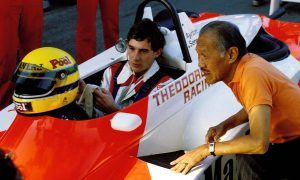In the early stages of braking, the calipers do the main work but progressively, pressure is modulated according to a series of criteria: the quantity of energy generated by the MGU-K (limited to 2MJ per lap) and how much needs to be stored, brake temperatures, and the front-to-rear brake balance required by the driver in order to insure a stable ride during the slow down phase.
The influx of real time information to the ECU is incessant, while the brake pressure reducing valve works overtime, continuously opening and shutting to maintain the varying pressure and give a stable front-to-rear brake balance. Managing the complex series of procedures in a reliable way and, especially, getting the feel right for the driver were major headaches for most of F1's teams back in 2014.
Rod Nelson: "Its key to the mapping and the brake setup that when you come off the brakes there is no residual force that may give a little bit of instability or a lock up. Some drivers are very, very sensitive to this."
“The driver needs to have a good feeling of retardation versus pressure that is not steppy or moves around, it has to stay the same," explains Williams Chief Test Engineer Rod Nelson. "He can adjust the bias forwards or rearwards as in the past but we are also balancing how much energy he uses from the rears with how much we are trying to recover. Its key to the mapping and the brake setup that when you come off the brakes there is no residual force that may give a little bit of instability or a lock up. Some drivers are very, very sensitive to this."
Losing weight
With so much braking now being done by the torque reversal upon the rear axle of the ERS, several teams have reduced the size of their brake discs - mainly for weight and aerodynamic benefit. In most cases, diameter and thickness has been reduced by 3mm than the maximum allowable 28mm. Six-pot calipers have been replaced by four-pots at Mercedes, Red Bull, McLaren and Sauber. (And some engineers have even suggested that it would be possible to run no rear brake discs at all if the regulations allowed it, with all the braking done by the ERS!). In the event of a failure of the MGU-K unit a back-up hydraulic system will intervene. But the downsizing of the carbon fiber discs provides the system with a limited efficiency, as was witnessed in Sakhir last Sunday, but also in Canada last year, a track which is particularly demanding on brakes and where Lewis Hamilton suffered a brake disc failure when the MGU-K unit ceased to function following an electrical break down.
In the end, the arrival of the brake-by-wire system means that only two actions remain in the mechanical control of the driver: steering the front wheels and the pressure applied to the front brakes. Every other system on a F1 car is now 'drive-by-wire'.








